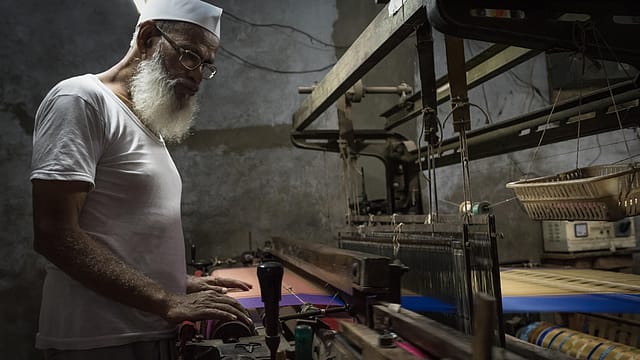Budget 2021: ‘Atmanirbhar’ vision for manufacturing
ADVERTISEMENT

Over the last 10 months, four mini Budgets have been presented, with myriad of reforms to tackle the pandemic driven economic crises. This year’s Union Budget was an extension to the earlier presented mini Budgets showing the government’s efforts on reviving the economy and bringing it back on track. The ‘no negative news’ Budget led to a strong cheer in the capital markets and provided more direction in achieving the government’s goal of creating an ‘Aatmanirbhar Bharat.’
Bain & Company’s assessment suggests that India has the potential to take manufacturing gross value add (GVA) to $1 trillion by 2025, driven by underlying existing growth, import substitution, and export acceleration. The following set of initiatives mentioned in the Budget will enable the journey towards the same.
Incentivising domestic production for self-reliance
In addition to the Production Linked Incentives (PLI) scheme announced for 13 sectors over the last year, the finance minister announced a slew of reforms to incentivise local production. The PLI scheme worth ₹1.97 lakh crore will provide strong impetus for moving production to India, in a bid to make the country a hub for manufacturing and exports. In a move to make the textile exports of the country even more competitive, seven textile parks with plug-and-play facilities will be set up, in addition to the ₹10,683 crore PLI scheme for the sector. A phased out manufacturing plan for solar panels and solar cells was announced, which will help make India self-reliant in the renewable energy space.
December 2025
The annual Fortune 500 India list, the definitive compendium of corporate performance, is out. This year, the cumulative revenue of the Fortune 500 India companies has breached $2 trillion for the first time. Plus, find out which are the Best B-schools in India.
The government strongly recognises the role of MSMEs in realising the ‘Aatmanirbhar Bharat’ ambition. Doubling the allocation for MSMEs from last year to ₹15,700 crore, the finance minister has also made the compliance ecosystem easier by increasing the audit threshold from ₹5 crore to ₹10 crore. Changes to the definition of a ‘small company’ have also been proposed under the Companies Act 2013, easing compliance requirements for more than two lakh companies.
Impetus to boost demand for manufacturing
The finance minister has proposed a sharp increase in capital expenditure and thus has provided ₹5.54 lakh crore which is 34.5% more than the budget estimates of 2020–21. This will boost demand, as investments in physical infrastructure will have multiplier effects—generating demand in cement, steel, auto, building materials, and allied industries. With plans to encourage purchase of fuel-efficient vehicles and reduce oil import bills, the finance minister announced the vehicle scrappage policy.
This is likely to provide support to the automotive sector, which has been ailing since FY19. Moreover, the ₹18,000 crore scheme to boost bus-based public transportation in India will act as a catalyst of more growth in the auto sector. Extending the income tax relief on affordable housing loans with a deduction of ₹1.5 lakh, the government has also announced a tax holiday for another year for certain affordable housing projects. This will provide a push for housing for all and growth for the real estate sector.
The government strongly recognises the role of MSMEs in realising the ‘Aatmanirbhar Bharat’ ambition. Doubling the allocation for MSMEs from last year to ₹15,700 crore, the finance minister has also made the compliance ecosystem easier by increasing the audit threshold from ₹5 crore to ₹10 crore. Changes to the definition of a ‘small company’ have also been proposed under the Companies Act 2013, easing compliance requirements for more than two lakh companies.
Customs duties to create barriers in favour of domestic manufacturing
Increasing customs duty on several items, the government hopes to reduce imports and provide incentives for local manufacturing. Hikes in customs duty on solar inverters and solar lanterns to 20% and 15%, respectively, will promote indigenous production in the renewables space. Further duty hikes on capital goods, auto parts, mobile and electronic components will strengthen the domestic production ecosystem. Reduction in duty on iron and steel imports, however, will adversely impact the steel sector. This was possibly done to make metal raw materials cheaper for other manufacturing sectors. An overhaul of the customs duty structure with review of over 400 old exemptions was also announced in a bid to ease compliance.
Push towards key enablers to achieve the vision
The finance minister announced a slew of infrastructure projects with the aim of bringing down the logistics costs for the country. A record ₹1.07 lakh crore has been allocated for capital expenditure to the railways along with the announcement of the National Rail Plan 2030. New dedicated freight corridor projects—East Coast corridor from Kharagpur to Vijaywada, East-West corridor from Bhusawal to Kharagpur to Dankuni and North-South corridor from Itarsi to Vijaywada, will make transport of goods across the country as well as to the ports cost- and time-effective. Furthermore, over 8,500 km of new national highways and allocation of ₹1.1 lakh crore to the Ministry of Road Transport and Highways will improve connectivity across the country. The announcement of seven new port projects via Public Private Partnership (PPP) mode will push India’s share in global shipping as well as aid export oriented policies. This infrastructure boost will have a ripple effect on the manufacturing sector.
Given the macroeconomic context, the Budget provides steps in the right direction towards creating an ‘Aatmanirbhar Bharat’. The sharp increase in capital expenditure is a testament to the government’s focus on reviving demand post the pandemic and creating a more manufacturing friendly ecosystem. The promises to boost domestic manufacturing will help make India more resilient and gain prominence in the global supply chain, pushing us closer towards the $1 trillion manufacturing GVA potential.
Views are personal. Jain (extreme left) is a Partner and Singawne is an Associate Partner in Bain & Company’s New Delhi office.
